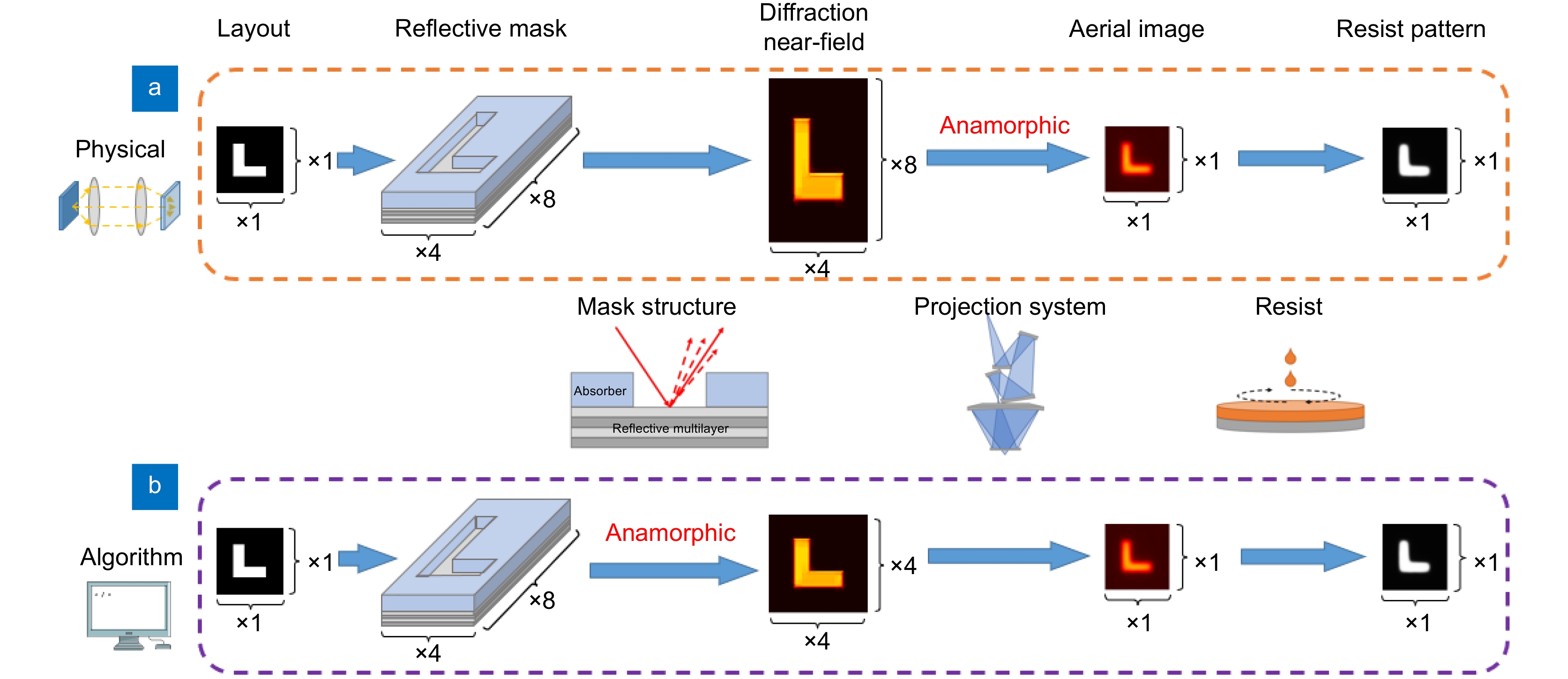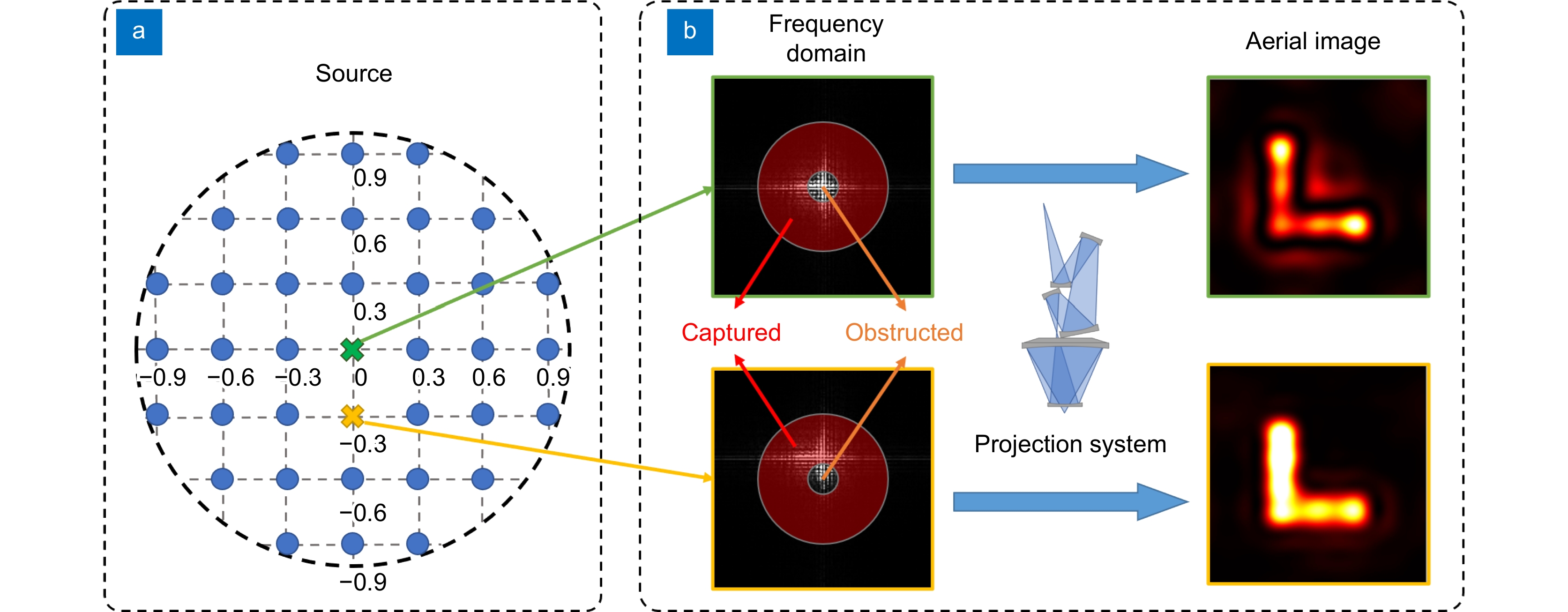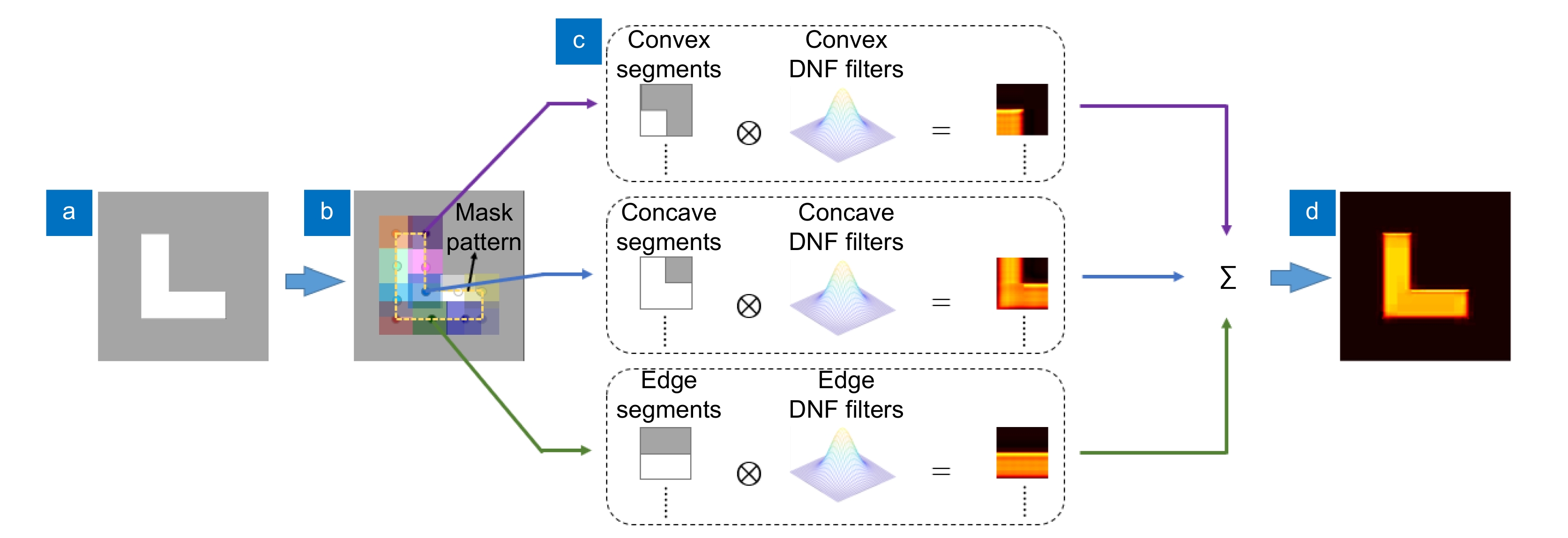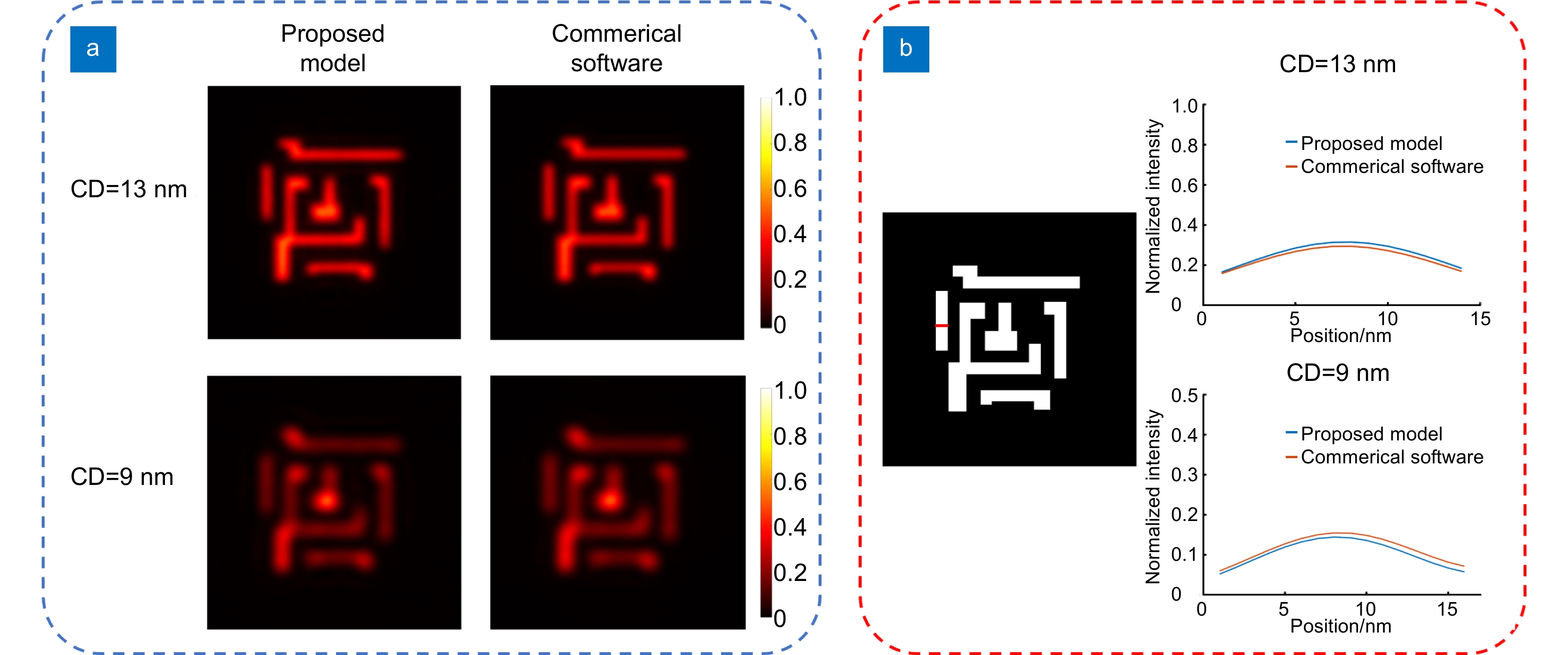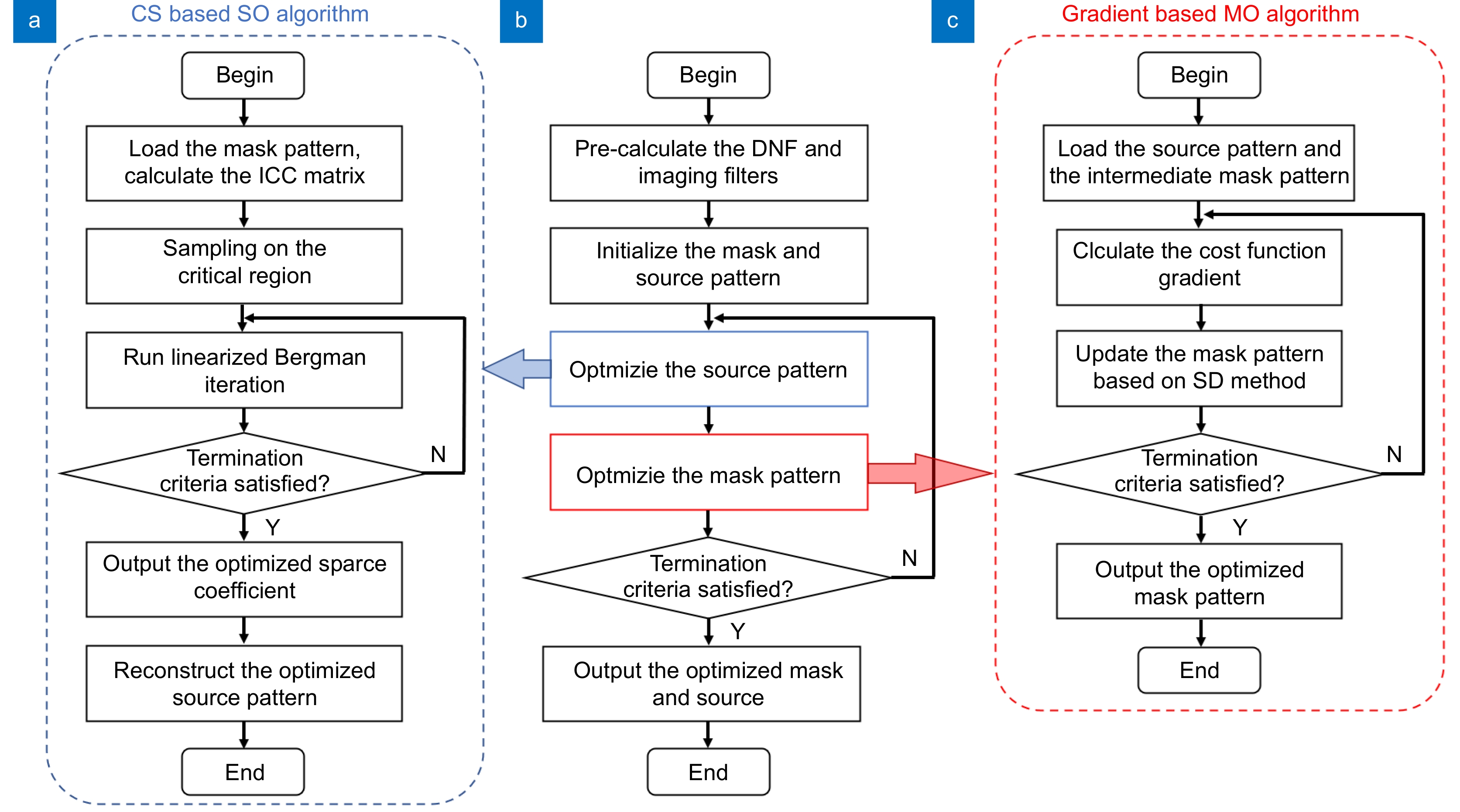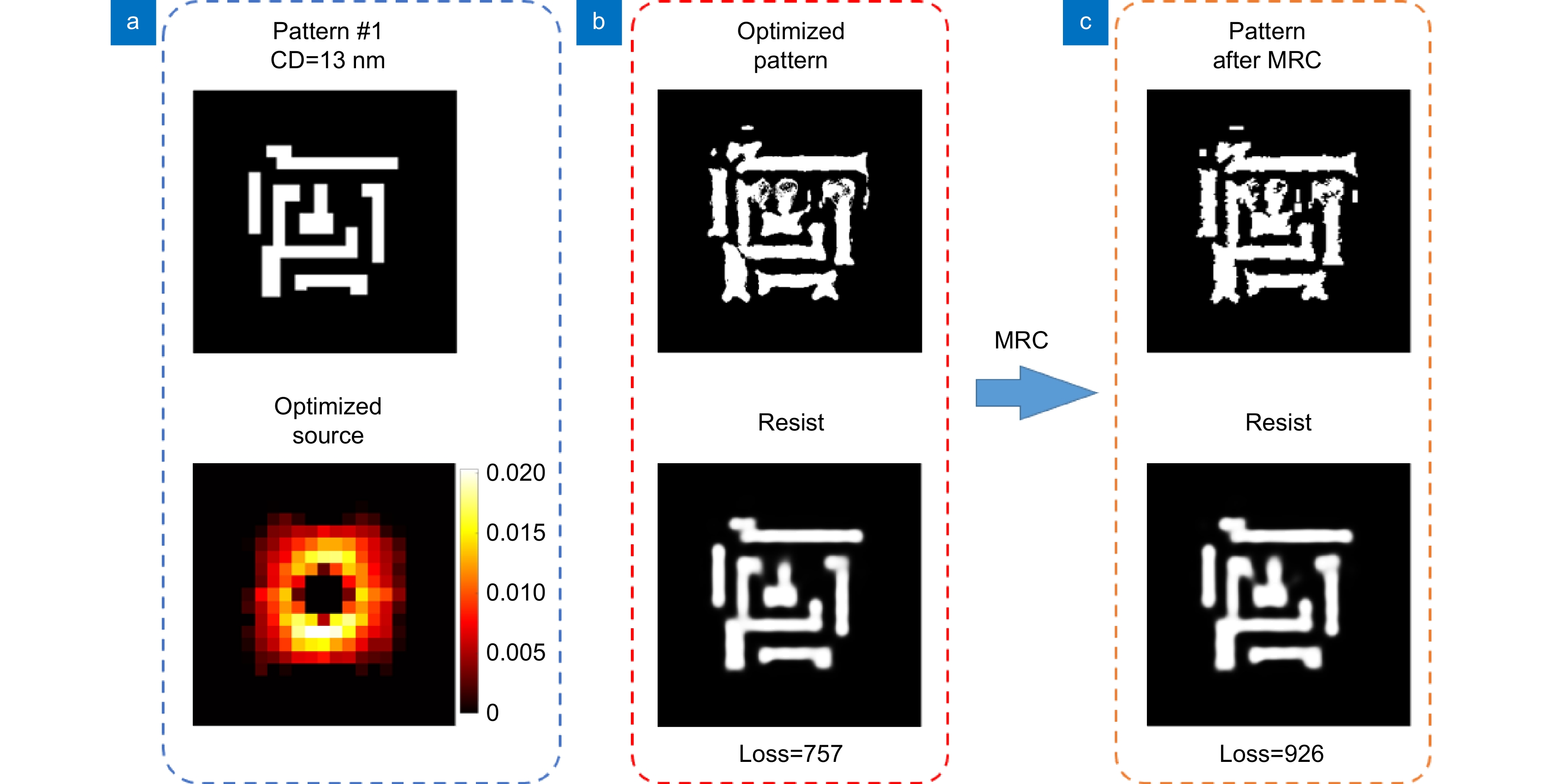| Citation: | Li ZQ, Dong LS, Ma X et al. Fast source mask co-optimization method for high-NA EUV lithography. Opto-Electron Adv 7, 230235 (2024). doi: 10.29026/oea.2024.230235 |
Fast source mask co-optimization method for high-NA EUV lithography
-
Abstract
Extreme ultraviolet (EUV) lithography with high numerical aperture (NA) is a future technology to manufacture the integrated circuit in sub-nanometer dimension. Meanwhile, source mask co-optimization (SMO) is an extensively used approach for advanced lithography process beyond 28 nm technology node. This work proposes a novel SMO method to improve the image fidelity of high-NA EUV lithography system. A fast high-NA EUV lithography imaging model is established first, which includes the effects of mask three-dimensional structure and anamorphic magnification. Then, this paper develops an efficient SMO method that combines the gradient-based mask optimization algorithm and the compressive-sensing-based source optimization algorithm. A mask rule check (MRC) process is further proposed to simplify the optimized mask pattern. Results illustrate that the proposed SMO method can significantly reduce the lithography patterning error, and maintain high computational efficiency. -

-
References
[1] Erdmann A. Optical and EUV Lithography: A Modeling Perspective (SPIE Press, Bellingham, 2021). [2] Bakshi V. EUV Lithography (SPIE Press, Bellingham, 2009). [3] Mack C. Fundamental Principles of Optical Lithography: the Science of Microfabrication (John Wiley & Sons, Chichester, 2007). [4] Ma X, Arce GR. Computational Lithography (John Wiley & Sons, Hoboken, 2010). [5] Lin JX, Dong LS, Fan TA et al. Fast aerial image model for EUV lithography using the adjoint fully convolutional network. Opt Express 30, 11944–11958 (2022). doi: 10.1364/OE.452420 [6] Liu P, Xie XB, Liu W et al. Fast 3D thick mask model for full-chip EUVL simulations. Proc SPIE 8679, 86790W (2013). doi: 10.1117/12.2010818 [7] Li ZQ, Jing XY, Dong LS et al. Fast diffraction model of an EUV mask based on asymmetric patch data fitting. Appl Opt 62, 6561–6570 (2023). doi: 10.1364/AO.499361 [8] Shiraishi M, Oshino T, Murakami K et al. Flare modeling and calculation on EUV optics. Proc SPIE 7636, 763629 (2010). doi: 10.1117/12.846472 [9] Rosenbluth AE, Bukofsky SJ, Fonseca CA et al. Optimum mask and source patterns to print a given shape. J Micro/Nanolithogr MEMS MOEMS 1, 13–30 (2002). doi: 10.1117/1.1448500 [10] Pan YH, Ma X, Zhang SE et al. Efficient informatics-based source and mask optimization for optical lithography. Appl Opt 60, 8307–8315 (2021). doi: 10.1364/AO.433962 [11] Ma X, Dong LS, Han CY et al. Gradient-based joint source polarization mask optimization for optical lithography. J Micro/Nanolithogr MEMS MOEMS 14, 023504 (2015). doi: 10.1117/1.JMM.14.2.023504 [12] Ma X, Wang ZQ, Chen XB et al. Gradient-based source mask optimization for extreme ultraviolet lithography. IEEE Trans Comput Imaging 5, 120–135 (2019). doi: 10.1109/TCI.2018.2880342 [13] Zou LL, Sun YY, Wei PZ et al. Exposure latitude aware source and mask optimization for extreme ultraviolet lithography. Appl Opt 60, 9404–9410 (2021). doi: 10.1364/AO.440528 [14] Zhang ZN, Li SK, Wang XZ et al. Source mask optimization for extreme-ultraviolet lithography based on thick mask model and social learning particle swarm optimization algorithm. Opt Express 29, 5448–5465 (2021). doi: 10.1364/OE.418242 [15] Gao WM, Zhu BE, Chiou TB et al. Computational lithographic study of 0.55 NA EUV single patterning for metal layers for the 2nm logic node and beyond. Proc SPIE 12052, 120520G (2022). [16] van Schoot J, van Setten E, Rispens G et al. High-numerical aperture extreme ultraviolet scanner for 8-nm lithography and beyond. J Micro/Nanolithogr MEMS MOEMS 16, 041010 (2017). [17] Gao WM, Chen CK, Zimmermann J. Computational evaluation of critical logical metal layers of pitch 20-24nm and the aberration sensitivity in high NA EUV single patterning. Proc SPIE 12495, 1249509 (2023). [18] Li ZQ, Dong LS, Ma X et al. Decomposition-learning-based thick-mask model for partially coherent lithography system. Opt Express 31, 20321–20337 (2023). doi: 10.1364/OE.488511 [19] Li ZQ, Dong LS, Jing XY et al. High-precision lithography thick-mask model based on a decomposition machine learning method. Opt Express 30, 17680–17697 (2022). doi: 10.1364/OE.454513 [20] Azpiroz JT, Burr GW, Rosenbluth AE et al. Massively-parallel FDTD simulations to address mask electromagnetic effects in hyper–NA immersion lithography. Proc SPIE 6924, 69240Y (2008). doi: 10.1117/12.774443 [21] Lee SG, Lee KI, Lee JU et al. More stable algorithm for rigorous coupled wave analysis applied to topography simulation in optical lithography and its numerical implementation. Proc SPIE 2726, 288–298 (1996). doi: 10.1117/12.240966 [22] Ma X, Han CY, Li YQ et al. Hybrid source mask optimization for robust immersion lithography. Appl Opt 52, 4200–4211 (2013). doi: 10.1364/AO.52.004200 [23] Ma X, Shi DX, Wang ZQ et al. Lithographic source optimization based on adaptive projection compressive sensing. Opt Express 25, 7131–7149 (2017). doi: 10.1364/OE.25.007131 [24] Lin JX, Dong LS, Fan TA et al. Learning-based compressive sensing method for EUV lithographic source optimization. Opt Express 27, 22563–22581 (2019). doi: 10.1364/OE.27.022563 [25] Cai JF, Osher S, Shen ZW. Linearized Bregman iterations for compressed sensing. Math Comput 78, 1515–1536 (2009). doi: 10.1090/S0025-5718-08-02189-3 [26] Poonawala A, Milanfar P. Mask design for optical microlithography—an inverse imaging problem. IEEE Trans Image Process 16, 774–788 (2007). doi: 10.1109/TIP.2006.891332 [27] Yasuda J, Nomura H, Matsumoto H et al. Recent progress and future of electron multi-beam mask writer. Jpn J Appl Phys 62, SG0803 (2023). doi: 10.35848/1347-4065/acb65d -
Access History

Article Metrics
-
Figure 1.
Sketches of the projection systems for the (a) 1.35NA DUV immersion lithography, (b) 0.33NA EUV lithography, and (c) 0.55NA EUV lithography.
-
Figure 2.
The flows of (a) the lithography process, and (b) the proposed imaging model.
-
Figure 3.
The illustrations of (a) the source plane, and (b) the impacts of central obstruction in the projection system.
-
Figure 4.
The flow of the thick-mask model. (a) The L-shape mask pattern. (b) The mask decomposition. (c) The DNF segments calculated based on convolution kernels. (d) The final combined DNF for the entire mask pattern.
-
Figure 5.
The comparison of the proposed imaging model and a commercial software. (a) The aerial images of the mask patterns with 13 nm CD and 9 nm CD that are calculated by the proposed model (left) and commercial software (right), and (b) the cross sections of the normalized aerial images along the red line.
-
Figure 6.
The flowcharts of (a) the SO algorithm, (b) the main SMO method, and (c) the MO algorithm.
-
Figure 7.
The Illustration of (a) the seven testing layout patterns, and (b) scaling down of a mask pattern.
-
Figure 8.
The optimization results obtained by the proposed SMO method. (a) and (b) show the results of pattern #1 and pattern #2 with 13 nm CD.
-
Figure 9.
The optimization results obtained by the proposed SMO method. (a) and (b) show the results of pattern #1 and pattern #2 with 9 nm CD.
-
Figure 10.
The optimization results obtained by the proposed SMO method. (a) and (b) show the results of pattern #1 and pattern #2 with 7 nm CD.
-
Figure 11.
Results of the MRC. (a) The target mask and the illumination condition. (b) The optimized mask pattern and its resist pattern. (c) The mask after MRC and its resist pattern.

 E-mail Alert
E-mail Alert RSS
RSS
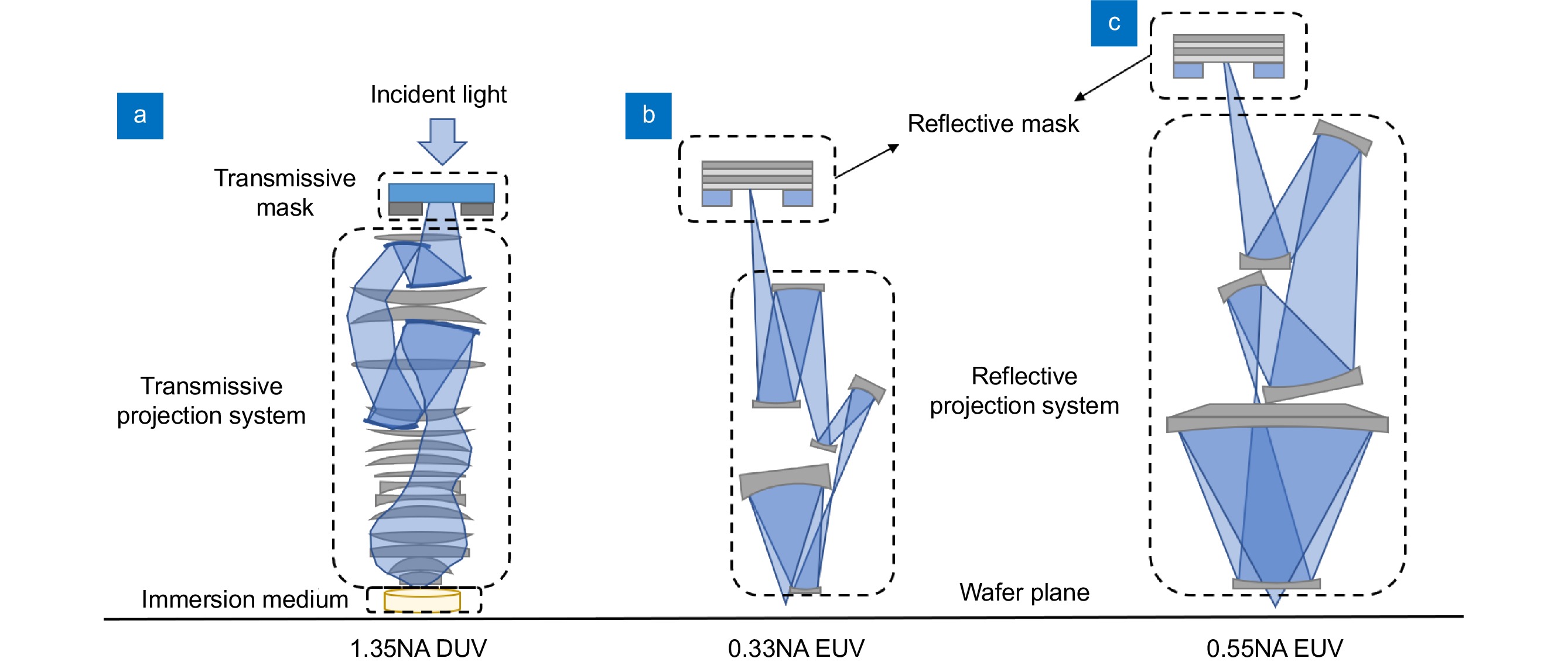

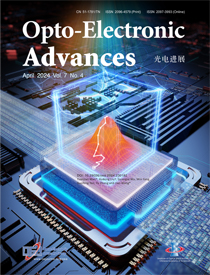
 DownLoad:
DownLoad:
